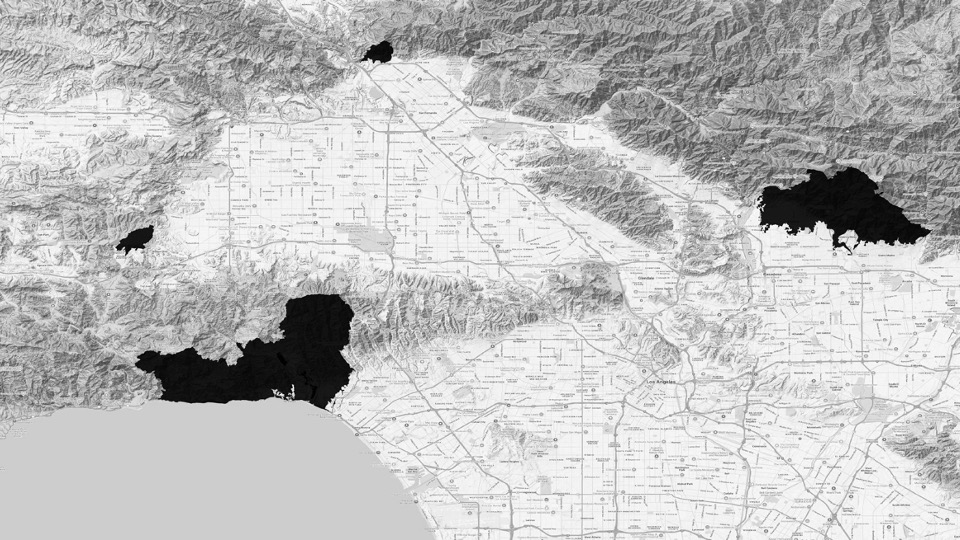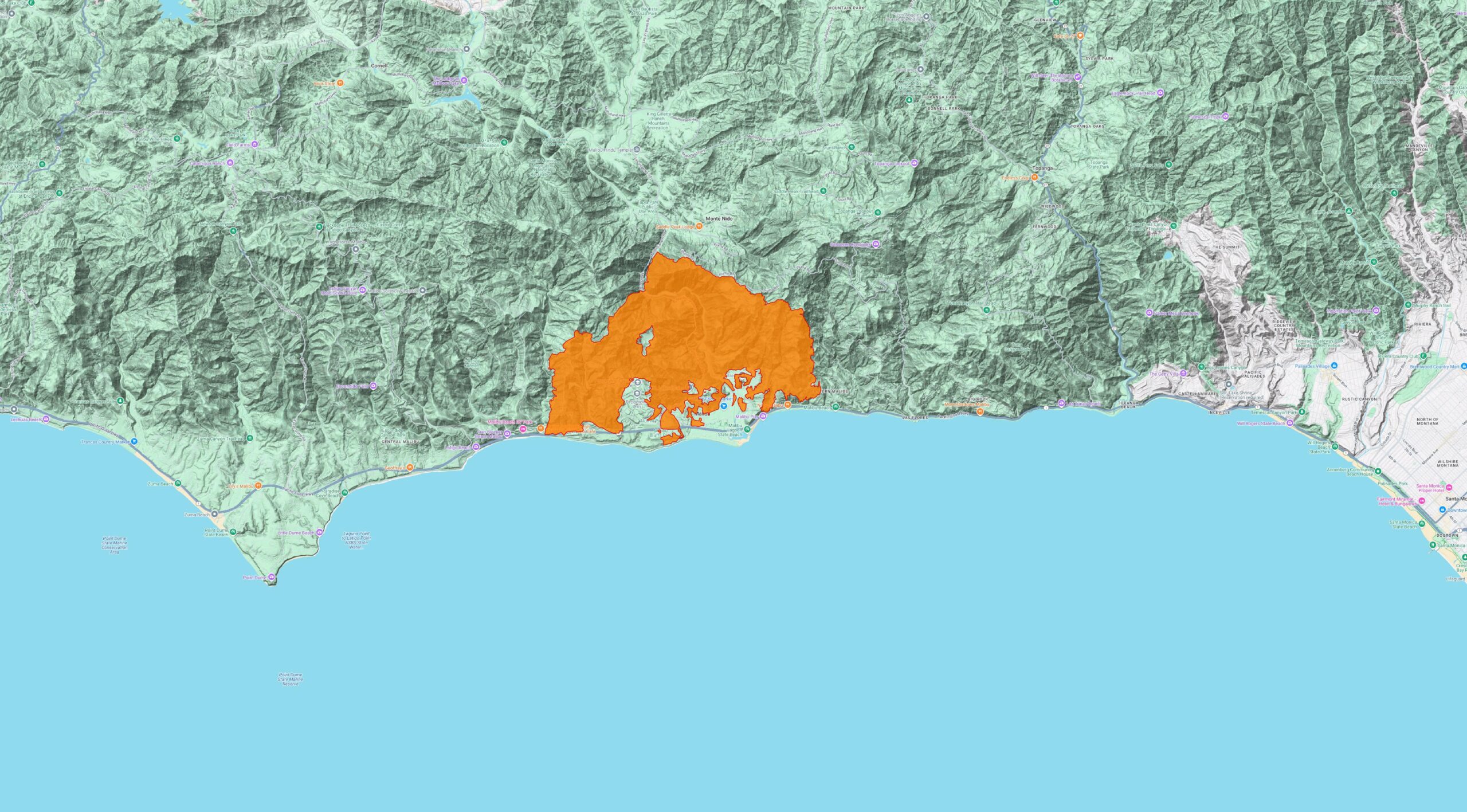Warmest Autumn on Record Fuels Abnormal Weather and Wildfires
Scientists at the National Oceanic and Atmospheric Administration (NOAA) confirmed that this Autumn was the warmest ever measured, surpassing the record-setting conditions from last year. The normally temperate months of September, October, and November were a staggering 4.1 degrees above average. November in particular was 6.3 degrees above average with every state reporting above-normal monthly average temperatures.
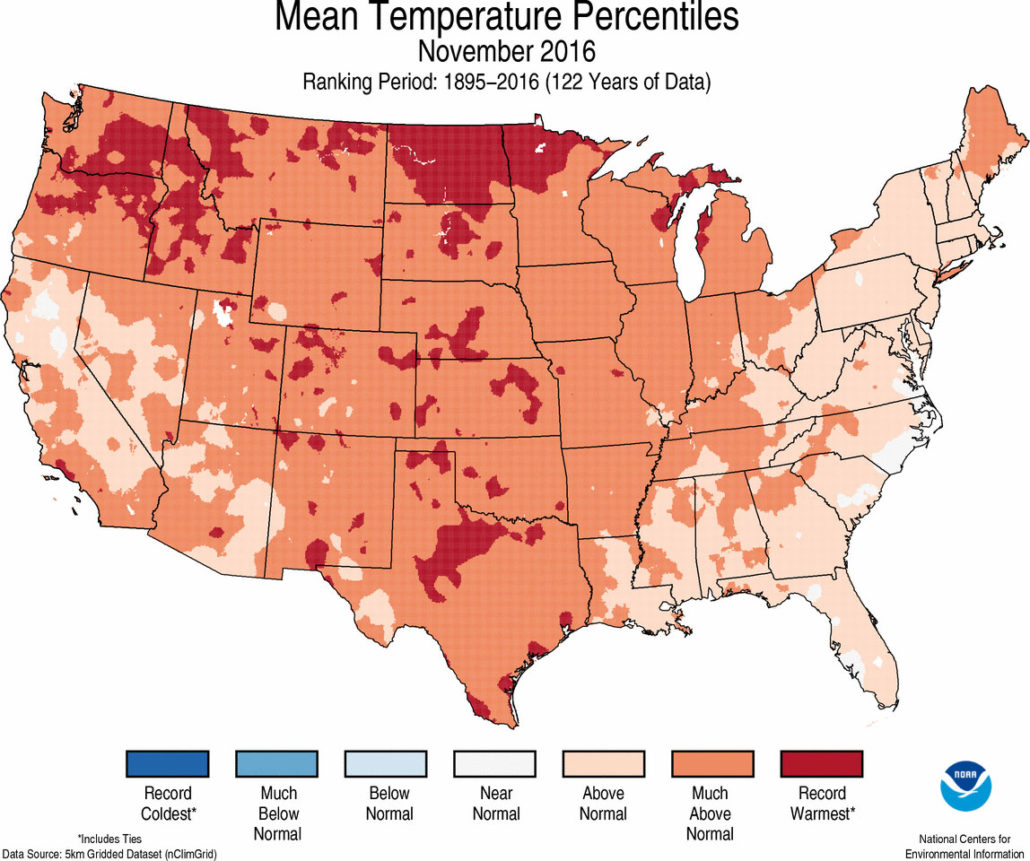
Record Breaking November – Every state reporting above-normal monthly average temperatures. https://www.ncdc.noaa.gov/
The hot temperatures were accompanied by abnormal precipitation levels across the country. While some areas of the Northwest experienced unprecedented late season rainfall, the majority of the country was blanketed by dry air. Overall the percentage of the US plagued by drought conditions grew from 19.5 at the end of summer to over 31 percent by the end of fall. The Southeast was especially hard hit by the lack of moisture.
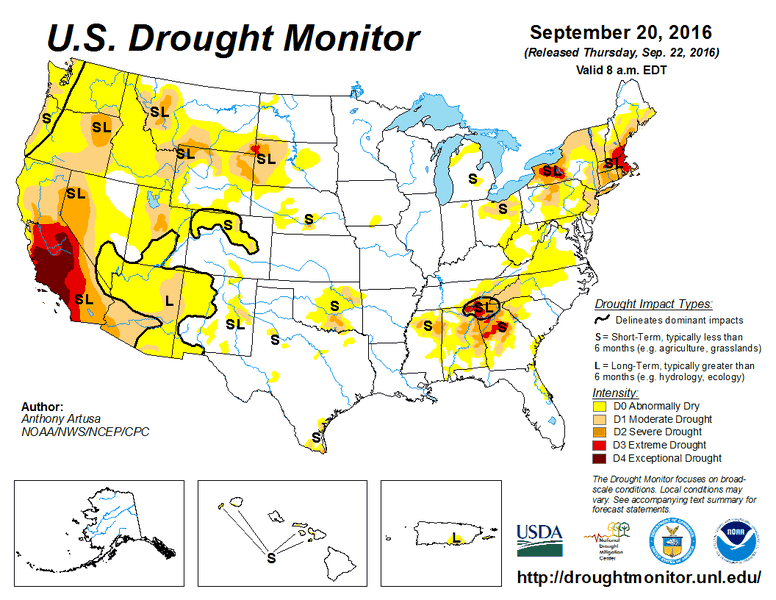
Late Season Drought Plagues the US.
Southeast United States Becomes a Tinderbox
Much of the Southeast went nearly two months without measurable precipitation. The lack of precipitation combined with record setting temperatures led to a flare-up of multiple wildfires across the Southern Appalachians. Residents of the region are used to late season wildfires but extreme conditions generated unexpected intensity. Wildfires in the area were not only more numerous, they were considerably larger in scale and ferocity.
At one point in November, RedZone Disaster Intelligence was tracking dozens of different fires across various southeastern states. NOAA reported that this November was the second worst in terms of wildfire devastation since they began tracking events in 2000. The recent Chimney Tops 2 fire is a heartbreaking example of what many fear may be the new normal for wildfires in the region.
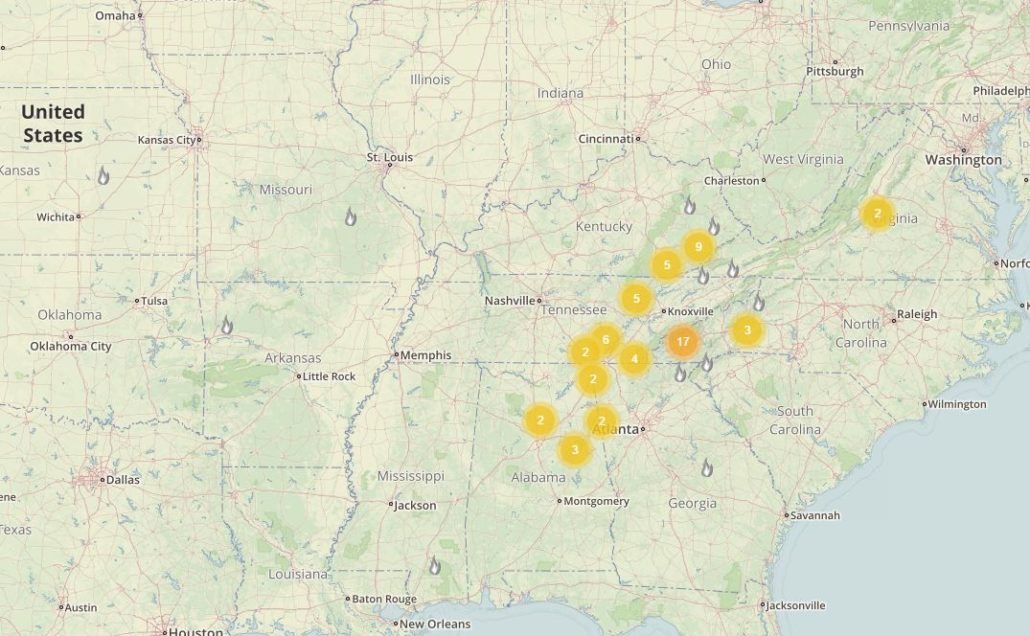
Southeastern Wildfires Raged in November.
Drought and High Temperatures the New Norm?
With 2016 coming to a close, it appears the year will finish as one of the warmest on record. With average temperatures continuing to climb, it is unclear how this may influence precipitation across the country. The conditions experienced this fall may not become the new norm, but there is a growing concern that a weak La Niña will bring a dryer-than-normal winter to much of the United States. Without the usual winter moisture replinishment, drought conditions will persist, leaving many areas prone to extreme fire weather next year.
Sources:
http://www.climatecentral.org/news/warmer-future-southeastern-wildfires-20912
https://www.ncdc.noaa.gov/sotc/summary-info
http://www.cnbc.com/2016/12/07/wildfire-plagued-fall-warmest-on-record-for-us-says-noaa.html


